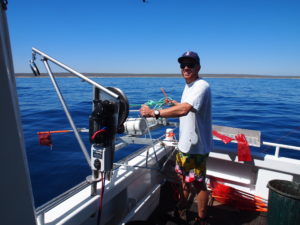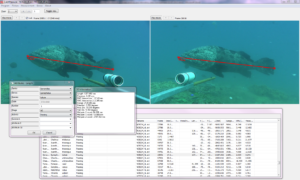Fish and shark assemblage dynamics
Uncovering patterns in fish species distribution and abundance
Project lead: Timothy Langlois (UWA)
The PMCP fish and shark project research team has investigated relationships between patterns in fish species distribution and abundance and a range of habitat, environmental and geographical variables along ~340 km of coastline comprising the Pilbara bioregion.
Two primary survey methodologies were used:

PMCP Researcher Matt Birt ready to deploy a lightweight stereo-BRUV system
- baited remote underwater stereo-video systems (stereo-BRUVs)
- diver operated stereo-video (stereo-DOV)
Stereo-BRUVs were the primary method used by the PMCP fish and shark research team to conduct surveys. State-of-the-art lightweight systems were developed and used in the world’s largest stereo-BRUV survey of fish and sharks ever undertaken. These systems can be deployed to depths >100 m.
Stereo-DOVs can be used by SCUBA divers to survey fish assemblages along transects in depths of 1-20 m.
The stereo-configuration of the video systems enables accurate and precise measurements of fish length and distance from specialised software (www.seagis.com.au). The high-definition video that is collected can be repeatedly viewed for correct species identification.

Accurate and precise measurements of fish length from stereo-video imagery using EventMeasure (www.seagis.com.au)
